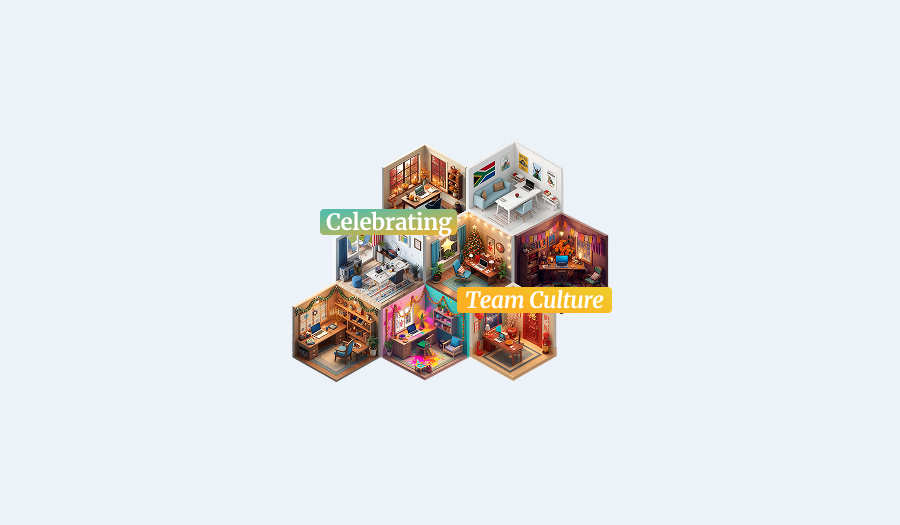How Cultural Diversity in the Workplace Fuels Innovation

Key Takeaways:
- Diverse perspectives fuel creativity – Teams with varied cultural backgrounds approach problems differently, reducing groupthink and generating fresh ideas.
- Cultural context enhances innovation – Different ways of thinking, symbols, and references blend to produce globally appealing products and services.
- Better questions drive better solutions – Diverse teams ask unique, critical questions that lead to more effective and innovative outcomes.
- Global insight improves market fit – Team members from different regions ensure products and campaigns resonate with international audiences.
- Time zones can boost productivity – Distributed teams enable a near 24-hour innovation cycle through asynchronous collaboration.
- Inclusion transforms conflict into creativity – Properly managed cultural “clashes” foster psychological safety, empathy, and daring, user-focused ideas.
These days, innovation isn’t a nice-to-have aspect, it’s the cost of staying in the game. And workplace diversity isn’t just the right thing to do; it’s a powerful engine for creativity and competitive edge.
When companies hire globally and bring people from different cultures onto the same teams, they tap into a deep well of perspectives. That mix doesn’t just sound good, it leads to better ideas and smarter decisions. So how does cultural richness turn into real business value? Let’s discuss.
What Is Cultural Diversity in the Workplace?
Cultural diversity means people from different backgrounds, race, ethnicity, language, nationality, age, religion, sexual orientation, and more, working together. In the workplace, it’s more than representation; it’s about inclusion and respect, and creating a culture where diverse voices aren’t just present but genuinely empowered.
Why Cultural Diversity Matters (and Why It’s Important)
- New Perspectives & Innovation: When teams are culturally diverse, they approach problems from angles others might miss. Varied viewpoints spark creativity and drive new ideas forward.
- Market Intelligence: When your team includes people from different regions, you gain real local knowledge that helps you enter new markets more thoughtfully and with fewer missteps.
- Inclusive Design & Marketing: When teams bring cultural sensitivity to their work, they pick up on regional nuances, and their messaging and products are more likely to hit home across regions.
- Talent Access & Retention: Companies known for genuine cultural inclusivity attract more candidates. According to Thomas International, many job seekers now prioritize diversity when deciding where to work.
- Boost in Productivity: According to Hult, diverse teams don’t just perform better, they’re also more adaptable.
- Personal & Professional Growth: Working with people from different cultures doesn’t just sharpen your skills, it also changes how you see the world.
Common Challenges of Cultural Diversity (And How to Overcome Them)
- Differences in Voice
In some cultures, people feel less comfortable speaking up. That’s why organizations need to build real psychological safety, so everyone feels safe sharing ideas, including those that challenge the status quo.
- Stereotypes & Prejudice
Cultural biases and negative stereotypes can get in the way of genuine integration. Active inclusion training and bias-awareness programs can help break down those barriers.
- Communication Barriers
Differences in language and communication style can easily lead to misunderstandings. Offer cross-cultural communication training and use helpful tools, like translation services and visual aids, to keep everyone on the same page.
- Employment Logistics
Visas, taxes, local labor laws, and benefits can make hiring much more complicated. HR teams need to plan ahead and be ready to work through these real-world hurdles.
- Cultural Etiquette & Norms
Across teams and cultures, people can differ a lot in work style, etiquette, punctuality, and comfort with hierarchy. Build cultural competence by weaving these norms into onboarding and training.
- Conflict in Working Styles
In diverse teams, people sometimes bump heads because they collaborate and solve problems in different ways. Put a few clear norms in place that respect those differences, like rotating meeting times and agreeing on how you’ll communicate.
Data-Driven Evidence: Diversity & Innovation
If you need proof that cultural diversity in the workplace is more than a feel-good idea, look to the Niagara Institute: companies with more diverse management teams generate 19% more revenue from innovation than those with less diversity.
They also note:
- Inclusive teams make better decisions, up to 87% of the time.
- Companies with diverse leadership see real results too: 45% of their total revenue comes from innovation, compared with 26% at less diverse organizations.
- They’re also 70% more likely to capture new markets.
How to Leverage Cultural Diversity - Strategies for Leaders
Promote Cultural Competency
Invest in practical training that builds real skills in cross-cultural dynamics, communication styles, and recognizing bias.
Create Inclusive Structures
Foster genuine psychological safety so people from any cultural background feel comfortable speaking up. Rotate meeting times to respect different time zones and cultural practices.
Celebrate Cultural Identity
Recognize cultural holidays, support regional celebrations, and invite employees to share their traditions.
Mentorship & Sponsorship
Pair colleagues from diverse backgrounds, promote cross-cultural mentorship, and actively sponsor cultural affinity groups.
Tailor Onboarding
Integrate cultural intelligence into onboarding, cover the company’s values and offer practical tips for working across different styles.
Provide Feedback With Sensitivity
Keep in mind that feedback lands differently across cultures, adjust the tone, format, and cadence to fit the person and situation.
Final Thoughts: Difference Isn’t a Disruption–It’s the Secret Ingredient
In a world where rapid innovation and profound user comprehension are paramount, cultural diversity is not merely a token. It is the force propelling teams to “next level” thought. When a team mirrors the globe, so do its ideas. So, whether you are a startup founder in Berlin, a recruiter in Manila, or a product lead in Toronto, keep this Final Thoughts
Cultural diversity in the workplace isn’t a box to tick; it’s a competitive advantage. When you invest in it, it fuels innovation, opens new markets, and strengthens human-centered design. The most forward-thinking companies don’t see differences as barriers, they treat them as features, not bugs.
Whether you’re leading a team, scaling a startup, or shaping your culture, remember this: difference isn’t disruption. It’s your secret ingredient.
in mind: global teams are not just skilled; they are also rich with stories and new ways of thinking, assets that help them achieve their objectives.





